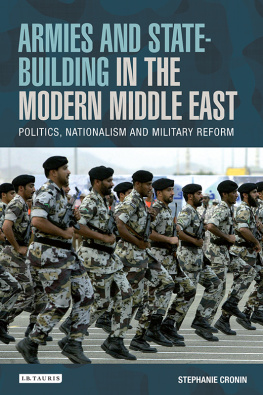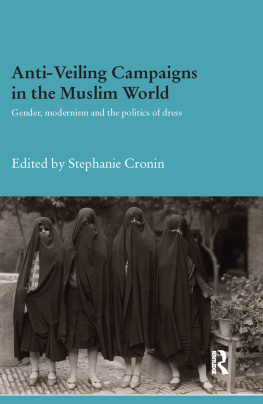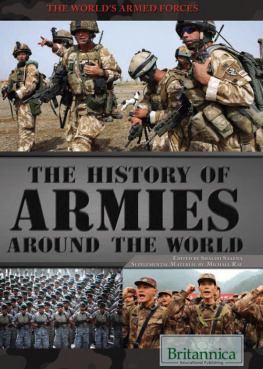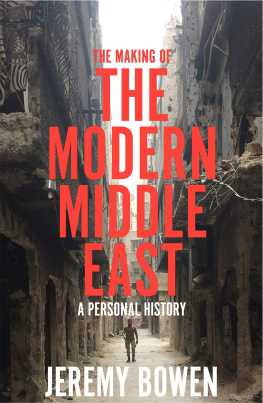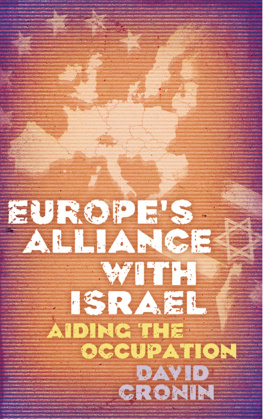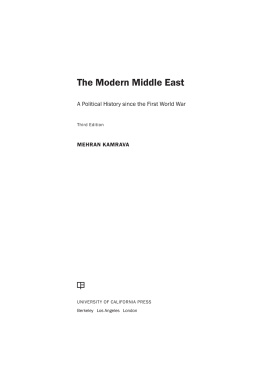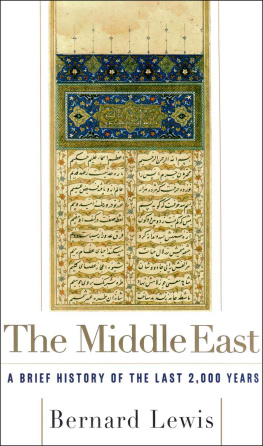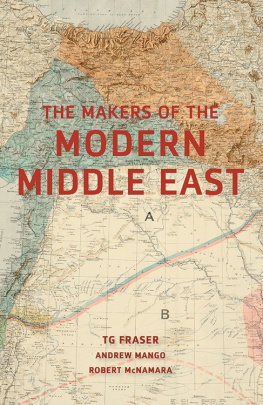Stephanie Cronin is Lecturer in Iranian History at the Faculty of Oriental Studies, University of Oxford. She is the author of Shahs, Soldiers and Subalterns: Opposition, Protest and Rebellion in Modern Iran (2010); Tribal Politics in Iran: Rural Conflict and the New State, 19211941 (2006) and The Army and the Creation of the Pahlavi State in Iran, 19101926 (I.B.Tauris, 1997); and editor of Anti-Veiling Campaigns in the Muslim World: Gender, Modernism and the Politics of Dress (forthcoming, 2014); IranianRussian Encounters: Empires and Revolutions since 1800 (2012); Subalterns and Social Protest: History from Below in the Middle East and North Africa (2007); Reformers and Revolutionaries in Modern Iran: New Perspectives on the Iranian Left (2004) and The Making of Modern Iran: State and Society under Riza Shah, 19211941 (2003).

Published in 2014 by I.B.Tauris & Co. Ltd
6 Salem Road, London W2 4BU
175 Fifth Avenue, New York NY 10010
www.ibtauris.com
Distributed in the United States and Canada Exclusively by Palgrave Macmillan
175 Fifth Avenue, New York NY 10010
Copyright 2014 Stephanie Cronin
The right of Stephanie Cronin to be identified as the author of this work has been asserted by her in accordance with the Copyright, Designs and Patents Act 1988.
All rights reserved. Except for brief quotations in a review, this book, or any part thereof, may not be reproduced, stored in or introduced into a retrieval system, or transmitted, in any form or by any means, electronic, mechanical, photocopying, recording or otherwise, without the prior written permission of the publisher.
Library of Modern Middle East Studies: 149
ISBN: 9781780767390 (HB)
9781780767406 (PB)
A full CIP record for this book is available from the British Library
A full CIP record is available from the Library of Congress
Library of Congress Catalog Card Number: available
Designed and typeset by 4word Ltd, Bristol
Contents
Acknowledgements
I would like to thank the Smith Richardson Foundation for the funding which enabled me to work on the research and writing of this book, and Al Song of the Foundation for his help in fine tuning the project. I would also like to thank Cheryl L. Ramp and Paula Landesberg of the Henry L. Stimson Center for their assistance in managing the funding. I am especially grateful to Mark Gasiorowski who was most generous in sharing with me material from the US archives. Bruce Vandervort of the Virginia Military Institute made a valuable contribution to shaping the Afghan narrative and Fakhreddin Azimi helped with Iran. Rowena Abdul Razak was especially helpful in providing me with certain documents from the National Archives. I also owe a debt of gratitude to Maria Marsh, for guiding the manuscript through the production process and to the insights of the anonymous reviewers who read the text for I.B.Tauris. Errors of fact and interpretation naturally remain my own.
Chapters and parts of chapters have appeared in earlier publications and are reproduced here with permission. Earlier versions of . Chapter 5 originally appeared as Tribes, coups and princes: building a modern army in Saudi Arabia, Middle Eastern Studies 49/1 (2013), pp. 228. I am grateful to the editors and publishers for permission to republish here.
INTRODUCTION
Armies, State-Building and Politics in the Middle East
The Arab Spring, which erupted so spectacularly and so unexpectedly in early 2011, has once again propelled Middle Eastern armies to the centre of the political stage. In Egypt and Tunisia, the military high commands moved adroitly to eliminate hated figureheads of army and state, Presidents Husni Mubarak in Egypt and Zine al-Abidine Ben Ali in Tunisia. In July 2013, the Egyptian army again intervened to immense popular acclaim, removing the democratically elected president, Muhammad Morsi of the Muslim Brotherhood. Elsewhere, national armies reacted differently to outbreaks of popular anger and dissent. In Libya a weak and disorganized military almost immediately split into two, an eastern faction based on Benghazi supporting the opposition, a western army based on Tripoli remaining loyal to Ghadafi. In Syria, after some early defections and despite almost universal Western predictions that the army would collapse, the bulk of military personnel at all levels stubbornly refused to disintegrate or to launch a coup against Bashar al-Assad, but continued to back his regime, month after long and weary month. In Bahrain the army, its rank and file largely composed of Sunni Pakistanis, quickly abandoned any pretence that it could meet the challenge from the streets and surrendered its role to the Saudi National Guard invited in by a panicking al-Khalifa ruling family.
The experience of the first decade of the twenty-first century provides ample reason to re-examine Middle Eastern armies and the historical context which produced them. Post-invasion Iraq and Afghanistan still struggle to create coherent national military forces. Although the Tunisian army, after its decision not to back the regime of Ben Ali, has receded into the political background, in Egypt the struggle between the military, the Muslim Brothers and the wider civil society remains in full swing, while the Syrian army is locked in a bitter endgame with the opposition. Meanwhile, the Syrian quagmire has increasingly drawn in its neighbour, Turkey, focusing attention on the Turkish army, its newly invigorated capacity to play a regional role, its domestic tensions with its own Islamist AKP government, and perhaps even its latent coup-making propensities. The Middle East continues to constitute a market of massive dimensions for Western defence industries, while the survival of individual regimes, and regional security in general, remains an obsession with Western and especially American policy-makers. The presence of Western, again especially American, military and defence personnel across the region is greater than ever, while Irans alleged nuclear ambitions have provided a renewed opportunity for other states to lavish ever-larger sums on their conventional military and security apparatuses.
Any analysis of the reasons for the specific behaviour of the military in each national context must take account of a complex web of factors relating to both the immediate political conjuncture, including the character of the opposition and the options which the military perceive to be open to them, and also the historical context which had moulded both regime and armed forces. In Egypt, for example, the Supreme Council of the Armed Forces (SCAF) moved against Mubarak in order to preserve the essential features of the existing political and economic systems and their own privileged position within these structures. Certainly their first inclination was to suppress the opposition as it gathered in Tahrir Square. Such efforts, however, clearly signalled the risk of an escalating, polarizing and radicalizing dynamic. As a consequence, they attempted compromise, this too failing to mollify a mass movement conscious of its new power as it established an extraordinary hegemony over the Egyptian population, especially in Cairo but also in many other towns and cities across the country. Finally, calculating the danger to the entire edifice of state and army represented by the popular clamour against Mubarak and aware of the loss of US support which had begun to waver under the impact of global public opinion and the weight of its own contradictions, the generals acted. In a covert coup, the Supreme Council ruthlessly sacrificed their leader and the clique around him. Taking interim power themselves, they inaugurated a long struggle with civil society over the constitutional future of the country. A new watershed was reached in July 2013 when, following a disastrous year in office of the Muslim Brotherhood president, Muhammad Morsi, the army took the opportunity provided by mass popular mobilizations to strike against their old adversaries and remove him from office.


